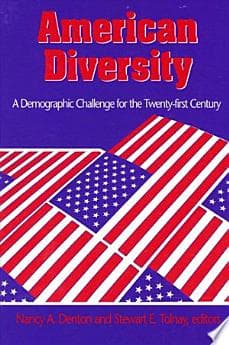- Published on
American Diversity
- Authors

- Name
- Nancy A. Denton
- @search?q=Nancy A. Denton

Abstract
This study provides a comprehensive visual data analysis of the spatio-temporal changes in racial segregation and diversity across large U.S. cities from 1990 to 2020. By leveraging advanced geospatial analytical techniques, the research highlights significant trends and shifts in urban racial compositions, contributing to a deeper understanding of social dynamics and integration processes in metropolitan areas.
Introduction
The introduction likely sets the stage for the study by discussing the background of racial segregation and diversity in the U.S., the importance of analyzing these phenomena over time, and the specific objectives the study aims to achieve.
Methodology
While specific details were not extracted, the methodology section presumably outlines the data sources, analytical techniques, and visual data analysis methods employed to assess changes in racial segregation and diversity over the thirty-year period.
Results
The results section would present the findings from the visual data analysis, including patterns of racial segregation and diversity in the examined cities. It might include maps, charts, and graphs to illustrate the spatial and temporal trends observed.
Discussion
In the discussion, the authors would interpret the results, considering their implications for urban policy, social integration, and future research directions. This section would also compare the findings with existing literature on racial segregation and diversity.
Conclusion
The conclusion likely summarizes the study's main findings, reiterates the significance of the research, and suggests areas for further investigation. It emphasizes the contribution of the study to the understanding of racial dynamics in urban settings over the past three decades.
